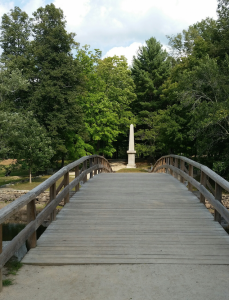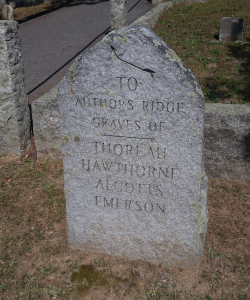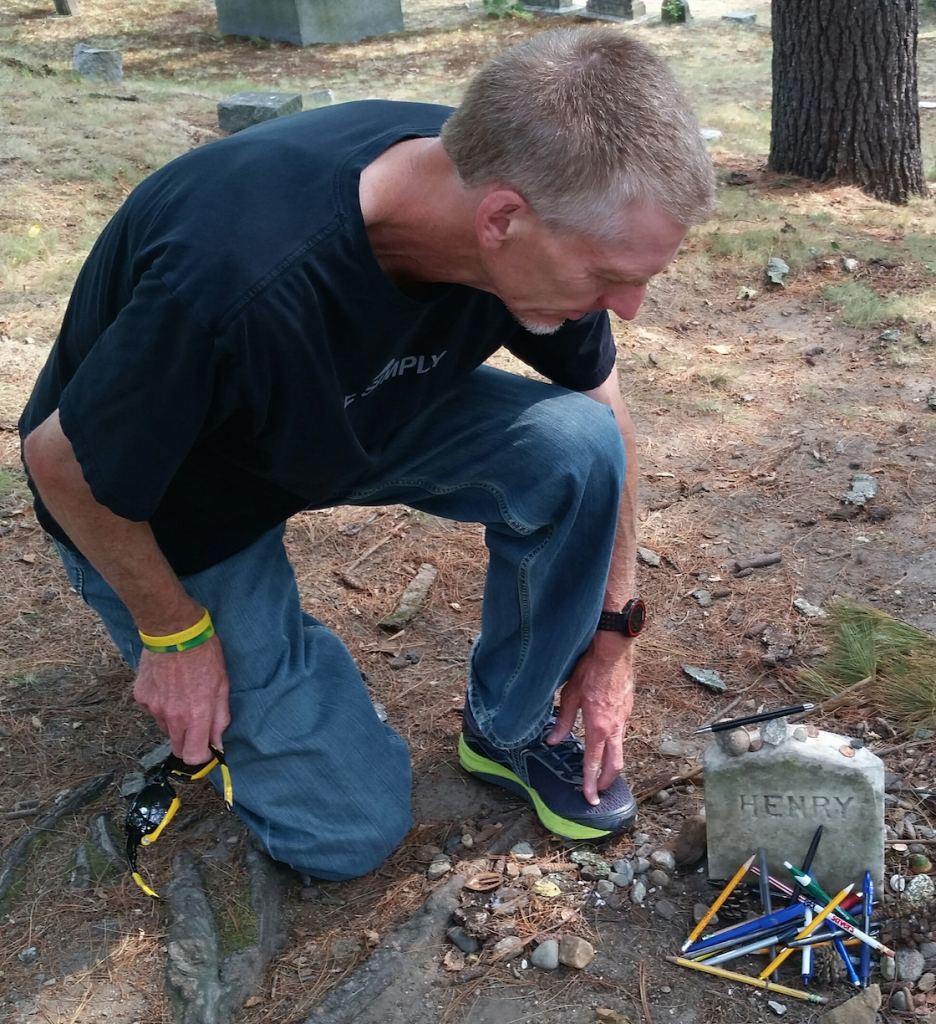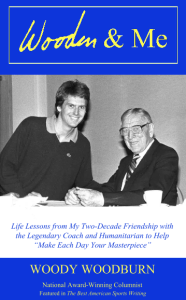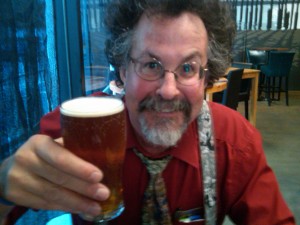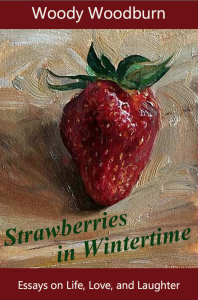 Woody’s highly anticipated new book “STRAWBERRIES IN WINTERTIME: Essays on Life, Love, and Laughter” is NOW available! Order your signed copy HERE!
Woody’s highly anticipated new book “STRAWBERRIES IN WINTERTIME: Essays on Life, Love, and Laughter” is NOW available! Order your signed copy HERE!
* * *
Literary Walk Takes Serendipitous Turn
“I have always depended on the kindness of strangers,” said the great playwright Tennessee Williams, who died 34 years ago today – Feb. 25, 1983 – one month and a day shy of turning 72.
The kindness of a stranger, with serendipity at play as well, made Williams leap off the printed page to life for me a short while ago. It was an encounter worth sharing.
Act One:
While in New Orleans on vacation, my wife, son, daughter, son-in-law, and I visited William Faulkner’s house in the French Quarter. In the upstairs study, in 1925, the future Nobel Laureate wrote his first novel, “Soldiers’ Pay.”
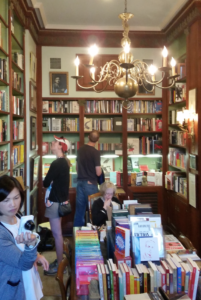
Inside William Faulker’s house turned bookstore.
Tucked away in an alley off famous Jackson Square, the home is now called “Faulkner House Books” and is a combination of charming bookstore and museum – with the emphasis on the former. While browsing books and memorabilia, we learned that another important 20th literary figure had once lived nearby: Tennessee Williams.
People collect many things, from postage stamps and baseball cards to fine wines and first-edition books. The later interest me, and greatly, but rare books are also generally beyond my bank account, and greatly.
As remedy, I have begun collecting visits to the homes of famous writers. My compilation includes John Steinbeck, Edgar Allen Poe, Thornton Burgess, Ralph Waldo Emerson, Henry David Thoreau and my top-shelf hero, Jim Murray, to name a handful.
The opportunity to add two more icons to my archives in a single afternoon was not to be passed up.
A Google search for directions revealed there was no reason to desire a streetcar – or Uber ride – to get to Williams’ home from Faulkner’s house. Less than a mile away, we decided to walk.
“We” now consisted of my son, daughter, son-in-law and me, for my wife begged out to go shopping. It wasn’t long before she seemed to have made the wiser choice.
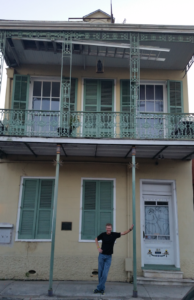
Hoping for some literary osmosis from Tennessee Williams’ house in the French Quarter.
A right turn when we should have gone left turned us into lost wayfarers. Tempted to quit our quest, we decided “in for a dime, in for a dollar” and pressed on.
At long last we arrived at 1014 Dumaine Street. With green shutters and matching ornate ironwork railings on an iconic French Quarter-style balcony, the two-story yellow house is attractive.
It was also, to be honest, a little disappointing. The only thing marking it as special is a small bronze plaque out front proclaiming:
“Tennessee Williams owned this 19th-century townhouse from 1962 until his death in 1983. Here he worked on his autobiography, Memoirs, in which he wrote, ‘I hope to die in my sleep . . . in this beautiful big brass bed in my New Orleans apartment, the bed that is associated with so much love . . .’ He always considered New Orleans his spiritual home. This home is dedicated a Literary Landmark by Friends of Libraries U.S.A.”
Even the plaque is less than remarkable with its raised words weatherworn and hard to make out.
Unassuming as it all is, with no tours either, we reverently stood in the quiet street and studied the house as one might the Mona Lisa. Suddenly, a voice broke our reverie.
“Do you know what that is?” a man asked, his friendly tone made even more so by a Southern drawl. He was dressed business casual; tucked under one arm was a stack of papers, folders and an iPad; round-rimmed glasses and thinning gray hair added to his professorial look.
“Yes, it’s the Tennessee Williams’ house,” my son easily answered.
“Do you know who he is?” came a follow-up question that was little more difficult.
“Of course,” my daughter replied. “He was an author and playwright – a great one. He wrote, ‘A Streetcar Named Desire’ and ‘The Glass Menagerie.’ ”
The gentleman smiled, pleased.
“Not many people seem to know who he is anymore,” he said.
Tennessee Williams talked about “the kindness of strangers.” We were about to experience the kindness of one stranger. A stranger who, serendipitously for us, personally knew Tennessee Williams.
Intermission. Act Two next Saturday.
* * *
Woody Woodburn writes a weekly column for The Ventura County Star and can be contacted at WoodyWriter@gmail.com.
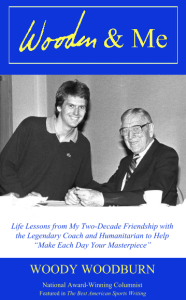 Check out my new memoir WOODEN & ME: Life Lessons from My Two-Decade Friendship with the Legendary Coach and Humanitarian to Help “Make Each Day Your Masterpiece”
Check out my new memoir WOODEN & ME: Life Lessons from My Two-Decade Friendship with the Legendary Coach and Humanitarian to Help “Make Each Day Your Masterpiece”
- Personalized signed copies are available at WoodyWoodburn.com
- Unsigned paperbacks or Kindle ebook can be purchased here at Amazon

